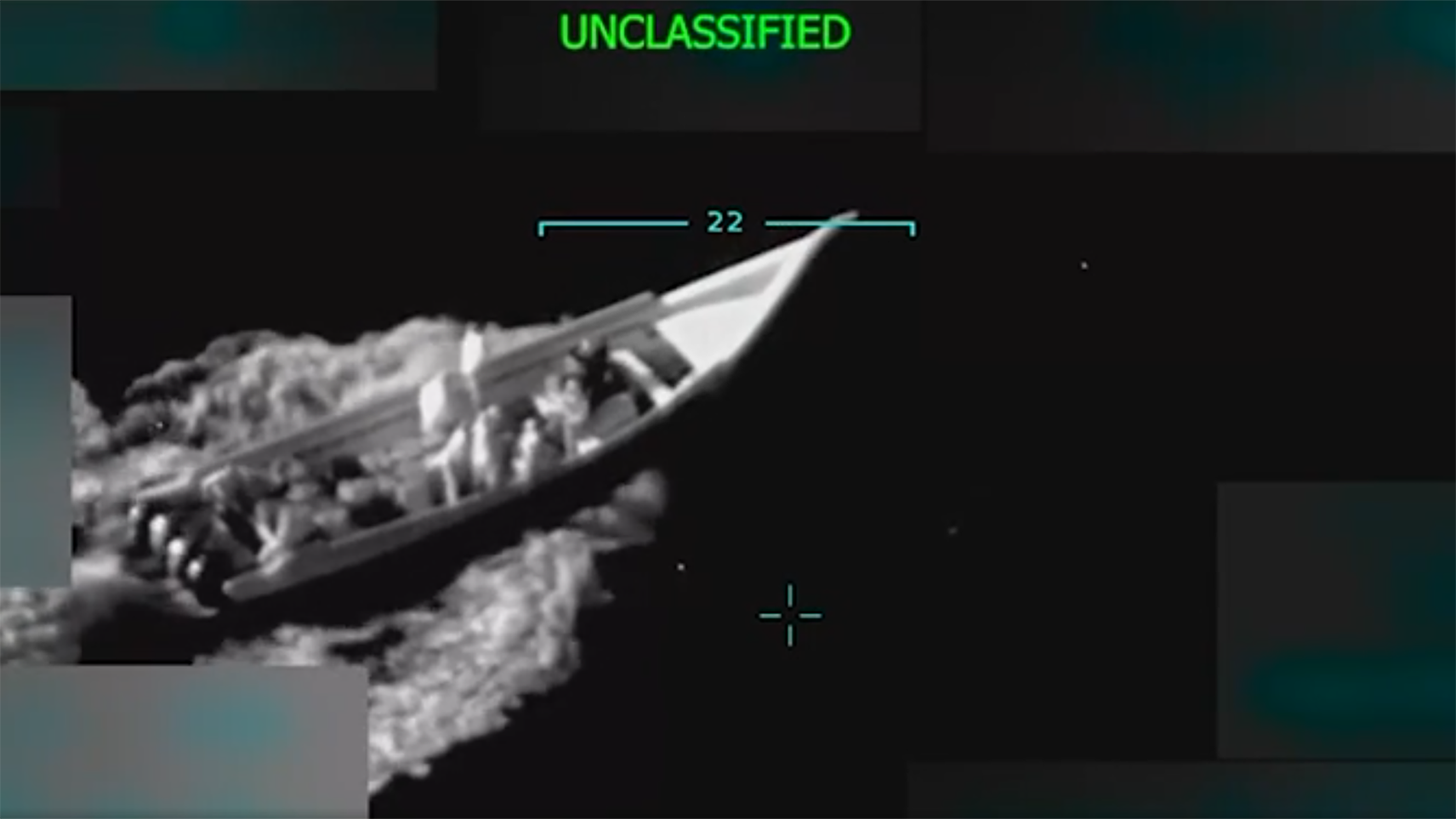Targeted from above: Canadian sensors facilitating unlawful U.S. airstrikes in the Caribbean
On the morning of September 2, 2025, a small speedboat skims across open water somewhere in the Caribbean Sea. Suddenly, in a flash of white, it’s destroyed in a U.S.-launched airstrike. All 11 people on board are reportedly killed. Two weeks later, another boat meets the same fate, with reports indicating three more people are killed. Aerial footage of both attacks, posted online by U.S. President Donald Trump, shows more than just a grainy, bird’s-eye view of the missions; it reveals the role that Canadian technology played in these airstrikes.
An investigation by Project Ploughshares has confirmed that both operations relied on advanced electro-optical/infrared (EO/IR) sensor systems built in Hamilton, Ontario, by L3Harris WESCAM.
These sensors, sold in large volumes to the U.S. government, are designed to surveil below aircraft, identify potential targets, and coordinate airstrikes with precision. Their distinctive on-screen interface, visible even in the redacted airstrike footage shared by President Trump, confirms that Canadian technology played a central role in the operations.
Human-rights monitors and UN officials have determined that the attacks, which took place in international waters and targeted alleged drug smugglers in the absence of any declared conflict, amount to extrajudicial killings. This, in turn, raises the question of whether Canadian technology will continue to facilitate such unlawful strikes in the region.
Canada is legally bound to ensure that its export of military goods does not contribute to violations of international law. But because of a decades-old agreement between Canada and the United States, most military goods that Canada sends to its southern neighbour — including the WESCAM sensors used in these operations — bypass the very export controls designed to prevent Canadian technology from contributing to such abuses.
These U.S. airstrikes reveal the consequences of this loophole and signal the immediate need to close it.
Read full report below.

